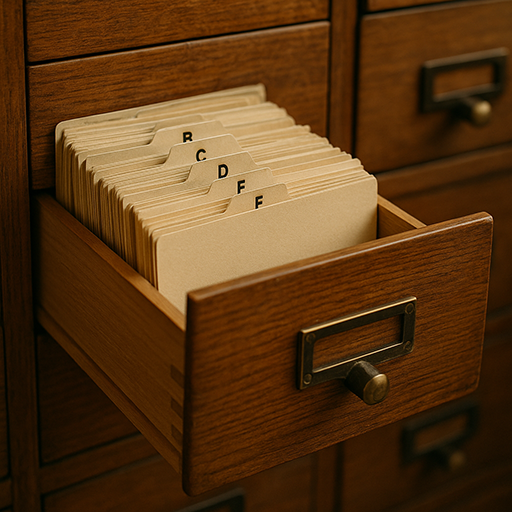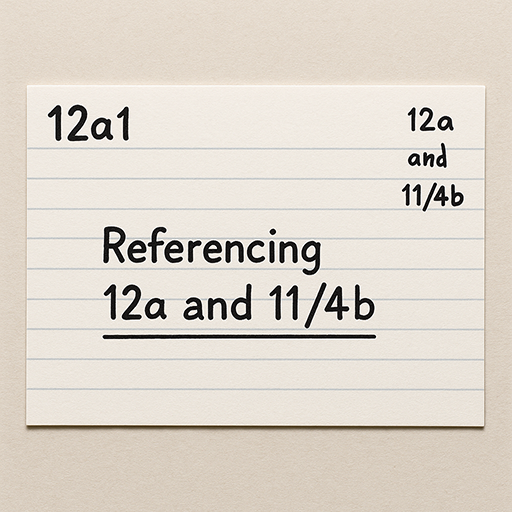Tools I Use to Start a Paper-Based Zettelkasten

If you're thinking about starting a Zettelkasten on paper, the first question that usually comes up is: “What tools do I need?”
Good news: you don’t need much. That’s one of the biggest advantages of the Slipbox Method. It’s low-tech, low-maintenance, and high-impact. You don’t need a Notion dashboard, a $500 scanner, or a second monitor. You just need the right physical tools and a system you trust.
Below, I’ll walk you through exactly what I use to run my analog-first slipbox—and why I chose each tool.
1. Index Cards (The Heart of the System)
The core of any paper Zettelkasten is the humble index card. I use 3x5-inch or A6-sized cards depending on availability, but the exact size isn’t the most important thing.
What matters is that:
- Each card fits one idea
- It’s easy to handle, scan, and sort
- You enjoy writing on it
What I use:
- Oxford Ruled Index Cards (white, 3x5)
- MUJI blank A6 cards when I want unlined flexibility
Why it works:
They’re sturdy, portable, and forgiving. You don’t get intimidated like you might with a blank A4 sheet. One card = one thought[1].

2. A Storage Box (Your “Kasten”)
This is your Zettelkasten’s physical home. It needs to do two things:
- Hold a growing number of cards
- Let you flip through them easily
You don’t need to spend a fortune. A recipe box works fine. So does a photo organizer.
What I use:
- Vintage-style index card drawer from Etsy
- Plastic photo storage case (holds multiple stacks by topic)
Why it works:
Having a dedicated container turns your notes into a physical archive. You’re building something tangible—and flipping through it becomes part of your thinking ritual.

3. Pens & Pencils (Your Connection to the Page)
You want something that feels comfortable in your hand and encourages deliberate writing. Don’t overthink this. Pick something you enjoy using.
What I use:
- Pilot G2 Gel Pens (0.7mm, black)
- Pentel Sharp Mechanical Pencil (for temporary drafts)
- Zebra Mildliners or gray highlighters (for subtle emphasis)
Why it works:
Using tools you enjoy creates ritual. The goal isn’t speed—it’s intention[2].
4. Card Numbering System
You’ll want to mark every card with a unique ID to keep things traceable and linkable. You can do this digitally (in a log) or manually (by writing numbers in the top corner of each card).
What I use:
- Manual numbering system: nested decimals like
12a,12a1,12a1a - A simple index notebook to log what I’ve added
Why it works:
It keeps the structure fluid. You can always insert new ideas between older ones without reorganizing everything.

5. Optional: Slipbox Index or “Bib Box”
If you’re reading a lot from books, you may want a separate box just for source references—also known as a Bib Box (short for Bibliography).
What I use:
- A second stack of cards organized by source: title, author, key themes
- These link to my literature notes and help with citations later
Why it works:
Keeps source material organized and easy to reference when developing permanent notes[3].
6. Workspace
This isn’t a tool you buy—it’s a habit you create. I have a small drawer dedicated to my slipbox supplies. That’s it. No apps. No alerts. No friction.
Why it works:
When you reduce the startup cost of thinking, it becomes easier to engage with your ideas. You don’t have to “boot up” anything to begin. Just pull a card and write.
Final Thoughts
The tools you use for a paper-based Zettelkasten don’t need to be fancy—but they should feel good in your hands. The goal isn’t to optimize every little piece; it’s to make writing and thinking so simple you actually do it.
Keep it analog. Keep it intentional. And let the slipbox grow—card by card.
